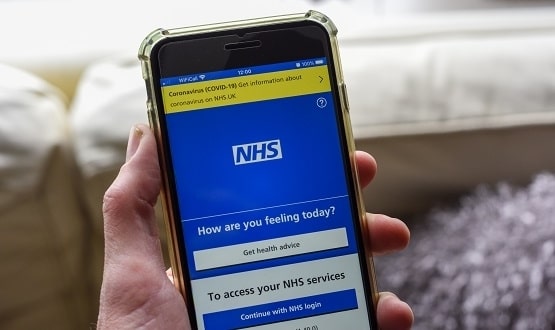What does the merger of NHS Digital and NHSX with NHS England mean?
- 25 November 2021

Following the announcement that NHS Digital and NHSX is to merge with NHS England and Improvement, Digital Health’s editor-in-chief, Jon Hoeksma, explores what the consequences will be for the NHS IT community.
NHS Digital and NHSX staff deserve a lot of sympathy this week. Having worked tirelessly throughout the pandemic, their reward is to be told the axe is to fall on their organisations, with many facing uncertainty surrounding their jobs.
News of the axing of NHS Digital (6000 staff) and NHSX (around 900 staff and contractors), was sudden and was delivered via a staff announcement from NHS England and Improvement CEO, Amanda Pritchard.
While a rationalisation of the many duplicate roles and responsibilities was widely expected, the full-blown take-over of NHS Digital caught many by surprise.
By making NHS Digital its in-house tech team, NHS England and Improvement will almost doubles its 6,500 staff overnight, in the short-term at least. There is a strong suspicion that the sheer size of NHS England and Improvement could lead to more job cuts.
One experienced NHS CIO told Digital Health News that changes ultimately made sense.
“There’s currently loads of duplication of very senior roles in NHS England and Improvement (CIO, Cyber, Data, programme etc) and more architects [digital and data] than in Norman Foster Partners, this will take time to settle.”
Back to the basement
While there is a widespread recognition of the need for rationalisation and greater clarity, there is a concern that in the name of embedding digital to the core business (like Tesco [Wade-Gery] or Jaguar [Bolton]), it will be relegated to a support function.
The news that Simon Bolton has been appointed the new NHS CIO, reporting to NHS England and Improvement’s director of transformation, Tim Ferris, also suggests that following the Wade-Gery review, digital is simply no longer at the top table in the way it was under Jeremy Hunt and Matt Hancock.
Another trust CIO commented: “There is a sense that with these changes digital, for all its achieved during Covid, has been demoted back to IT and sent packing back to the basement”.
What does the future look like?
A number of key questions are beginning to emerge, including, how much will the reforms cost and will there be an impact on current programmes and initiatives? To pick one, what’s the future of What Good Looks Like? To pick another, with Health Education England being abolished, where next of informatics workforce development? And finally, who now has responsibility for cyber security?
The consequence of most mergers is that organisations enter a period of introspection and naval gazing while people seek to make sense of the new landscape, structures, rules and hierarchies.
The move is also clearly a major piece of centralisation, even though Wade-Gery says otherwise, combining agencies that already often struggled to effectively work in partnership with and understand the pressures facing local NHS organisations and teams.
The Wade-Gery Review is in many respects a centralisers manifesto, with a vision of the natural primacy and desirability of a centrist organisation calling all the shots on digital and data.
This sits badly with some local leaders. One commented: “I’m a bit deflated that in the detail of the review it yet again talks repeatedly to “central” teams have all the expertise, around implementation, design, procurement and always infers non-central teams don’t – yet there never ever seems to be any actual evidence of this”.
An alternative approach would be to devolve and really commit to build up significant regional capabilities, putting teams much closer to trusts and ICSs, and ultimately spread knowledge, best practice and implementation expertise.
Need for a coherent strategy
Another NHS IT leader spoke of frustrations about the tendency in senior circles to conflate digital and technology with transformation and treat them as though they are interchangeable.
One NHS CIO said that the way Bolton’s appointment as the new NHS CIO was announced was “incredibly disrespectful of Sonia Patel, the current NHS CIO at NHSX”.
One seasoned observer added: “Bolton’s role will be absolutely pivotal. Who he gathers around him in the next stage will tell us a lot about the likelihood of future success”.
In a series of twitter posts since the news broke Bolton noted there had been a lot of comment and defended the mergers saying it would create cost savings by removing duplication.
In another he said: “I don’t know a successful organisation anywhere in the world that would countenance having tech strategy and operational strategy set in different places”.
While in a third he added: “The NHS needs coherent, consistent leadership on technology if it is to survive and thrive”.
Few would disagree that the NHS needs consistent leadership on digital, however there has been a merry-go-round of re-organisations, changes in direction and inter-agency rivalries.
Not given enough time
It is just three years since NHS X was established by Matt Hancock as a dedicated unit to accelerate NHS digitisation. Arguably, the main problem with NHSX is that it didn’t have enough time to become established and therefore have an impact, particularly with the past two years dominated by the pandemic.
Rumour has it that former NHS CEO, Simon Stevens, was no fan of Matt Hancock’s new creation, and it now looks as though that his successor Amanda Pritchard has taken the opportunity to bring it back into NHS England and Improvement.
The rationale for taking over NHS Digital looks far less clear. How will NHS England and Improvement do a better job of managing the delivery of critical operational infrastructure and data flows? Is the axing of the agency perhaps a prelude to selling off more lucrative parts of its work?
There are also a host of unanswered data privacy and information governance questions about NHS England and Improvement taking over NHS Digital’s responsibilities on extremely sensitive data processing. This may well quickly prove a lightning rod issue for privacy watchdogs.
NHS Digital is big, unwieldly, often bureaucratic, but it does an awful lot of important operational stuff, particularly provisioning NHS national IT infrastructure and services and data flows. Much of this is business critical to the NHS.
Along with NHSX, it’s 6000 odd staff and contractors also represent the biggest single pool of expertise in NHS informatics. Yes, that expertise is uneven but like the proverbial curate’s egg, it is likely to be very hard to separate good from bad.





4 Comments
If we are to decide whether NHSDigital and NHSX will work better separately or together under NHSE, surely we must ask first whether they have been effective, and whether the 6000+900 staff have been value for money, the answer must be a resounding NO.
Their purpose was to drive IT across the NHS, to reduce fragmentation,and to devise workable standards. In all these things, they have failed.
I speak as a patient, who has waited for 20 years for ‘Connecting for health”, and am still waiting.
I was in hospital over last weekend, my first visit in 18 moths. and i saw some tiny signs of change. The ambulance crew knew my medication without my telling them. That means they must have interrogated my GP record. Hurrah, but I have always found the ambulance service more IT savvy than hospitals.
Another tiny advance I found was that the nurses didn’t have to transcribe my Temperature, pulse and blood pressure on scruffy bits of paper . The readings presumably went straight to my patient record. Hurrah, I had been wondering when they would take this elementary step on a hospital visit ten years ago.. Ten years is a short time in NHS IT!
In one area , there was no progress at all. At 2.30 PM on Sunday, the consultant decided to release me, awaitng medication. At 6-30 I was still waitng for the pharmacy to release the medication, and so presubably was a patient in A&E waiting for a bed. And this is at a time when ambulances are stacked up at hospital gates. waitng tor beds, Pharmacy systems need a shake up.
All this is elementary communication stuff, which should have been sorted by NHSD or NHSX years ago.
Second that! The knowledge is in the provider suppliers! Absolutely! How many people are employed in IT/digital provider suppliers, pro-rota their services to the NHS in England (so exclude overseas markets and other home nations)? I think it’d make a great comparison to the bloat in the policy directorates in NHS D! Then let’s also ask how many at NHS D are project/policy abs how many are technical architects; developers etc?! I bet we know where the balance of the workforce will lie…
More of the same! I recall having dinner with Alan Johnson back in 2007 at a fundraising dinner for the Labour Party. I was working on the NHS National Programme for IT at the time and raising my concerns about the programme and that government needed the programme to work and so did the part but more important the British people. His response to me was “You don’t worry about that all government IT projects fail. relax enjoy your dinner” I said but Alen it’s £13 billion he burst out laughing. If anything what with the £37 billion “Test & Trace” it got worse.
Comments like the one below is laughable – the biggest digital and informatics expertise lies in NHS provider organisations – NHSX and NHSD should be digital departments of NHSE/I only, and their core mission should be to ENABLE delivery of patient care at a central level – they have lost focus and mission – anyone can see that!
“Along with NHSX, it’s 6000 odd staff and contractors also represent the biggest single pool of expertise in NHS informatics”
Comments are closed.